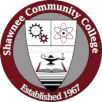 Policy
Policy
Policy Type: Board- Strategic Outcomes
Responsible: President
Related Policies: B1002
Linked Operating Standards: None
Related Laws: None
Related External Standards: None
HLC Criterion: 2B2B
The institution presents itself accurately and completely to students and the public with respect to its educational programs and any claims it makes related to the educational experience.
, 3A3A
The institution maintains learning goals and outcomes that reflect a level of rigor commensurate with college-level work, including by program level and the content of each of its educational programs.
, 3B3B The institution’s educational programs engage students in collecting, analyzing and communicating information; in practicing modes of intellectual inquiry or creative work; and in developing skills adaptable to changing environments., 3E3E The institution provides student support services that address the needs of its student populations, as well as the teaching resources and infrastructure necessary for student success., 3F3F The institution improves its curriculum based on periodic program review., 3G3G The institution’s student success outcomes demonstrate continuous improvement, taking into account the student populations it serves and benchmarks that reference peer institutions., 4B4B
The institution’s financial and personnel resources effectively support its current operations. The institution’s financial management balances short-term needs with long-term commitments and ensures its ongoing sustainability.
Monitoring Reports
Policy Statement
As identified in the College purpose statement, community education programming is an essential service that contributes to the personal interest, growth, and enrichment of community members.
Students receive value by engaging in the College’s community education courses, seminars, camps, and programs (i.e., community education programming) designed to help them fully develop their natural abilities by gaining knowledge and skills on topics of personal interest. By completing these lifelong learning activities, students potentially: enrich their lives; increase their personal satisfaction; gain a sense of self-fulfillment; adapt to change; increase their wisdom; and strike a balance between work and life. Further, students benefit from community education programming that enables them to continuously pursue and sustain their passion in ways that lead to feelings of social inclusion and demonstrations of active citizenship through active and meaningful contributions to society. Students receive greater value when their passions for community education programming can be linked to their professional interests or work life.
To achieve these benefits, the Board directs the President to establish, deliver, and continuously improve community education programming.
Key Monitoring Activities:
As it relates to the key performance areas noted in the Monitoring College Effectiveness policy, the Board is interested in community need, student interest, enrollment, fiscal stewardship, and deployment.
The measures and indicators suggested below are advisory in nature and are intended to provide the President with a broad range of ideas as to what the Board might find helpful as it monitors the College’s progress on the key performance areas for this Strategic Outcome. The President, at his/her discretion, can modify the measures and indicators as needed.
Specific measures for community need may include data that illustrates how civic development and engagement needs are being met. Potential indicators might include: the number of community education courses (or programs) offered; the number of unique community education courses offered (i.e., those courses not offered by other community education providers throughout the district); and the number of courses offered in partnership with other community education providers throughout the district.
Specific measures for student interest may include data that illustrates student course preference and increasing course (or program) flexibility. Potential indicators might identify: the number of community education courses (or programs) delivered (made); the number of courses offering multiple delivery methods; and the percentage of students participating in alternative delivery courses.
Specific measures for enrollment may include data that reflects headcount of students taking community education courses and market penetration. Data aggregated by student demographic profiles is appropriate. Potential indicators might identify: the number of students who participate in community education courses and programs; the number of people who take more than one community education course in a fiscal year; the number of people who demonstrate a sustained enrollment pattern in community education courses; the number of people (i.e., referrals) who take community education courses at partner community education providers; and the percentage of district residents taking community education courses in a fiscal year.
Specific measures for fiscal stewardship may include data that demonstrates sustainability of community education courses and programs. Potential indicators might reflect: the revenue generated; the costs incurred; and the margins realized by community education courses and programs.
Specific measures for deployment may include data in the measures of curriculum management and scheduling effectiveness, including breadth of courses, percentage of courses offered in multiple timeframes/formats, number of students who access courses from off-campus locations, the average number of sections per course, average enrollment per course, and average enrollment per section.
| Change Log | Governance Unit: Board of Trustees |
| Date | Description of Change |
| 03-07-22 | Initial Adoption |
| 09-06-22 | Added Deployment Measures |
| 08-17-23 | Reviewed, No Changes |
| 08-15-24 | Reviewed, No Changes |
| 08-21-25 | Board Reviewed, Minor Grammatical/Punctuation Changes; HLC Criterion Updated |
